260 kilograms of gypsum pedestal draws a pointy landscape, on top of which spiced wax houses tower up. The installation in the Trapéz art gallery focuses on the relationship between architectural design and construction, as well as the possibility of instinctive architecture. We visited the exhibition of the Architecture Uncomfortable Workshop in Budapest.
AU Workshop: Krespel Houses
Trapéz, Henszlmann Imre Street 3. Budapest 1053
April 13—May 20 2022
The AU Workshop became famous for its experimental architectural projects, which mostly found their place within the institutional system of art. So far, we have mainly met their installations at group exhibitions and biennials, for example at the exhibition of Dominika Trapp at Trafó Gallery, with their beehouse at the OFF-Biennale, and their heritage protection vision at the Hungarian Pavilion of the Venice Biennale. Their most recent appearance, the Krespel Houses opened in the Trapéz Gallery, is the first individual exhibition of the design team in Hungary, as well as one of the most concentrated and saturated art references.
According to Anna Zsoldos, the literary basis of the exhibition was E. T. A. Hoffmann’s short story Rat Krespel, published in 1818, which is about a strange person living according to specific principles, a romantic genius who cannot be understood. Councillor Krespel starts a construction project without plans, only the area and the materials to be used are available, everything else depends on the invited workers and the current impulses. The house is unusual on the outside and very cozy on the inside. The workers enjoy free construction and celebrate the end result with a great feast. The central theme of the exhibition is whether it is possible to operate with a similar mentality in the contemporary architecture scene today.
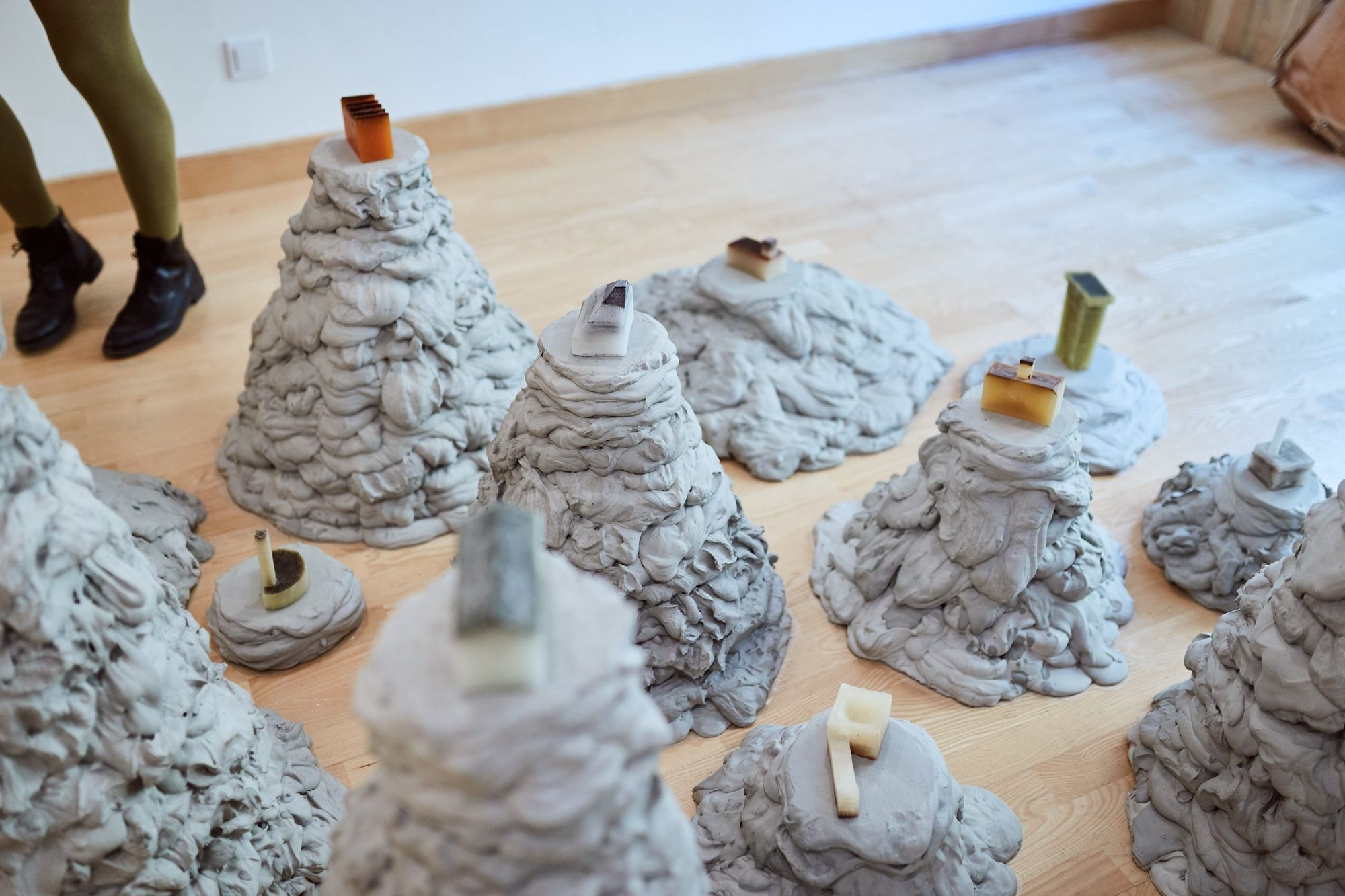
In the gallery, there are palm-high, colored wax houses seasoned with spices on gypsum pedestals. As you approach them, you can smell turmeric, dill and cinnamon. Each wax casting is different: one resembles a house, another a warehouse, but it can also be a chimney factory, observatory or granary. The exhibition opened a few days ago, the gypsum pedestals hinting at the mountains are still wet, but the tops are already drying and whitening—just like snowy mountain peaks. The symbol of the spice accompanies the visitor in conceptual, textual and material form. In one of the short stories of the AU Workshop, a cook and an architect talk around the landscape with snowy peaks. According to the chef, he relies on his taste over the years when cooking, he does not follow recipes. The architect—and the designers of the AU Workshop together with the short story character—ask the question: how can the practice based on feeling, randomness and intuition be transposed into architectural practice? Is it possible to build without a recipe, leaving the plans on the paper behind? And if so, what is the spice of architecture? Materials? The people who use the building? Or the builders who create it with their hands?
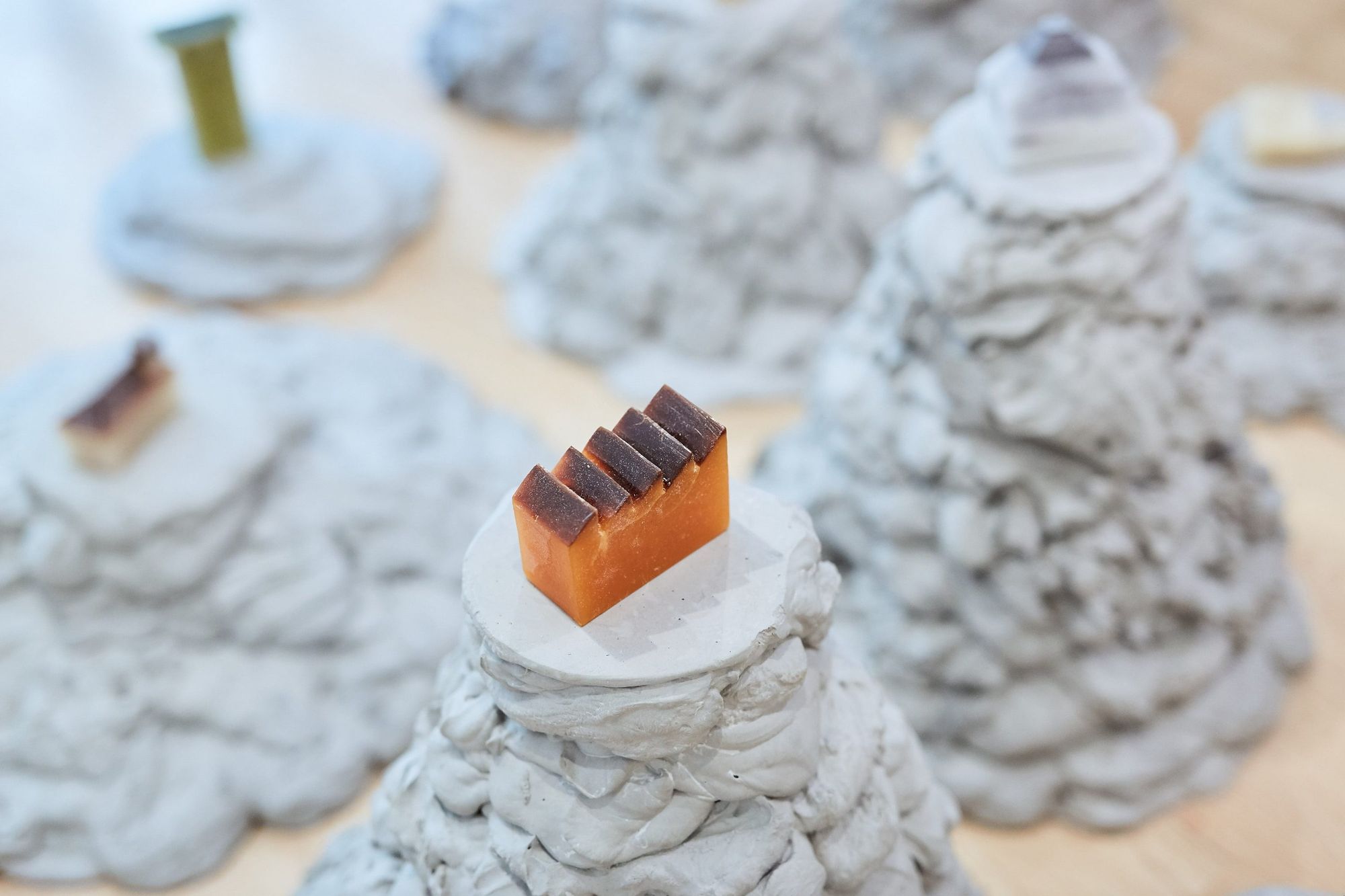
Each of these assumptions is imprinted in the space. The material’s leading role is represented by the spices that color the wax houses, where the shapes of the houses were associated with the characters of the spices. The Hoffmann short story fragments lined up on the wall, on the other hand, set the atmosphere of the spaces in parallel with the characteristics and inner world of the inhabitants—a typical feature of German Romanticism. The AU Workshop borrows the pattern of the mental state projected onto the landscape from Hoffmann and Caspar David Friedrich. Although the workshop is usually identified with Dénes Ghyczy and Lukács Szederkényi, there are always others on the team who are actively involved in both theoretical and practical work. Several people also worked on the wax houses: someone drew in the studio space in Hűvösvölgy, which was soaked with the smell of spices, while someone else made a mold or poured wax. Following Krespel’s example, they worked together, experimenting and intuitively, to create the authorless miniature structures.
The AU Workshop is one of the few Hungarian architectural groups that are also present in the art world, while at the same time meeting customer requests, mostly designing family houses. From this angle, the biggest question of the self-reflective exhibition is perhaps not whether it is possible to build a house without precise drawings or measured proportions, but whether the critical visions have the power to fertilize the practice and incorporate the germs of the thinking typical of Councillor Krespel into the work of the client.

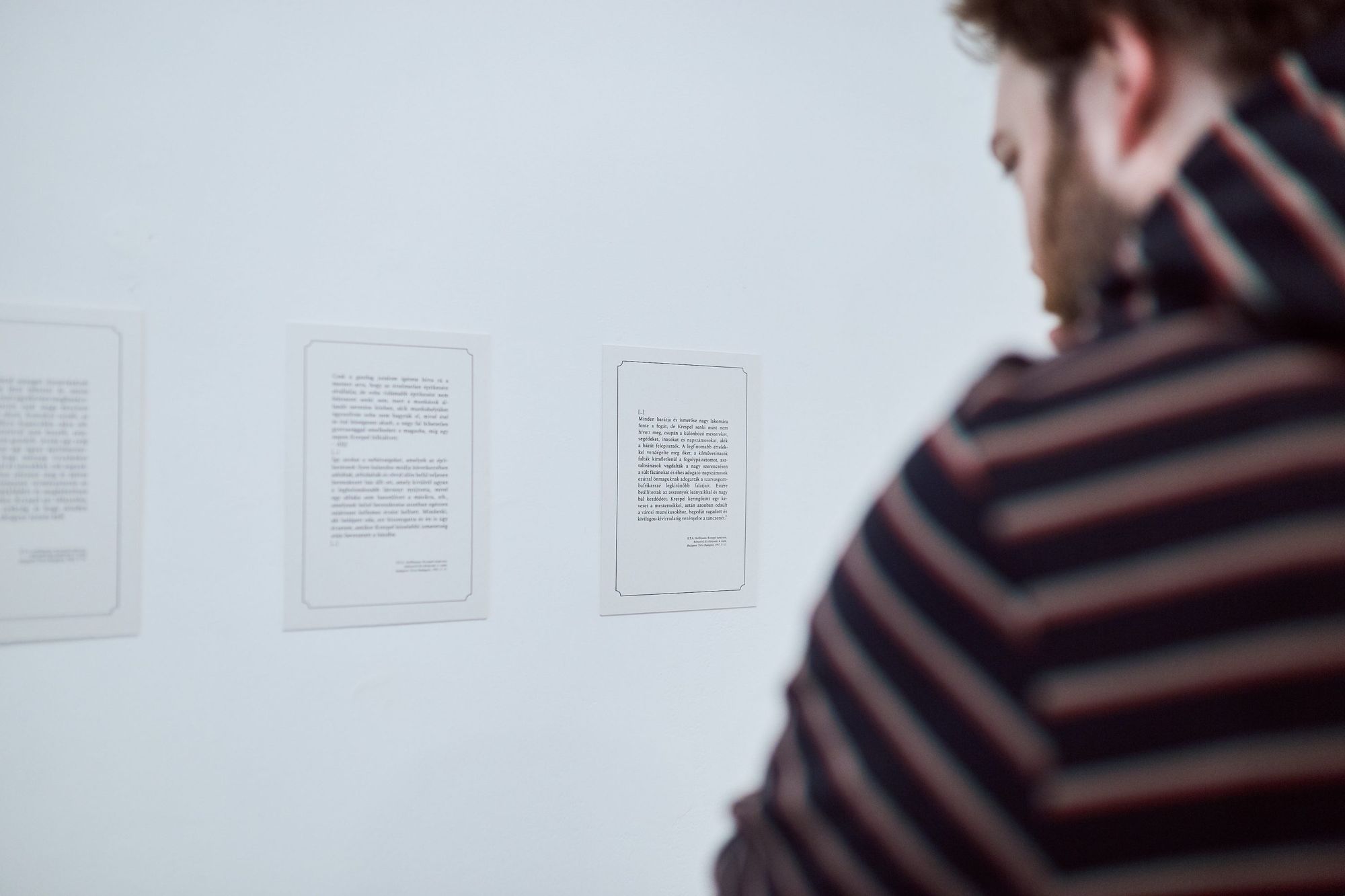
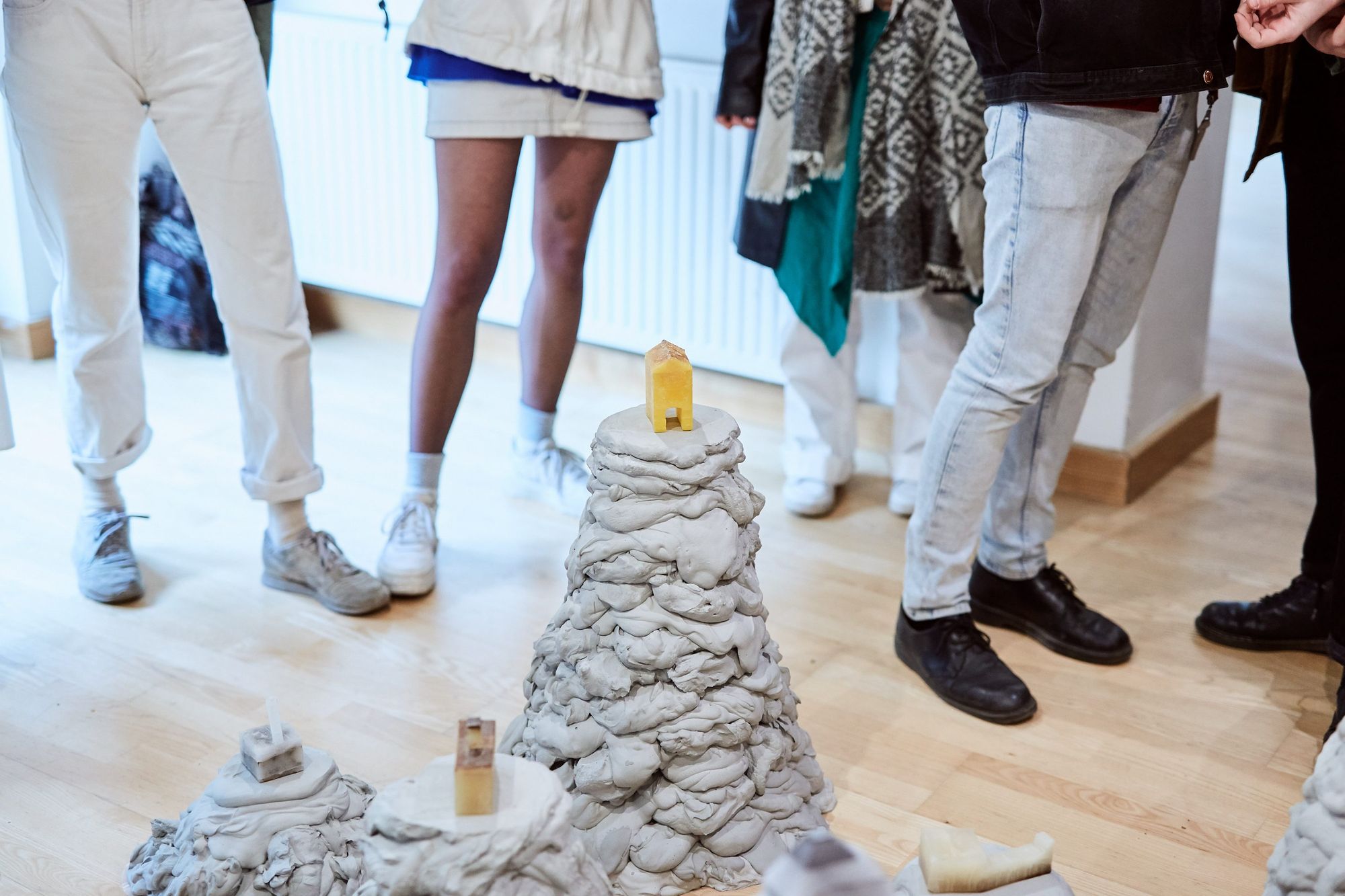
Photos: Krisztina Bilák / Trapéz
AU Workshop | Web | Facebook | Instagram
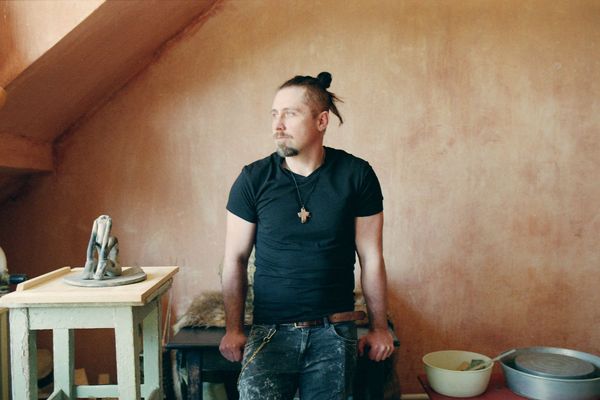
„Some of my shapes are so old that they feel modern, almost abstract"—Meander Ceramics Manufactory
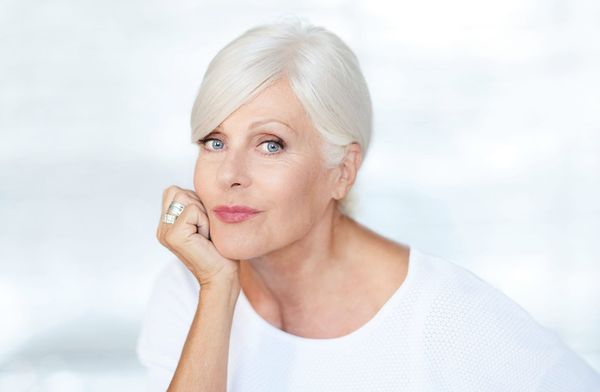
Ági Pataki unveils the secret of timeless beauty










